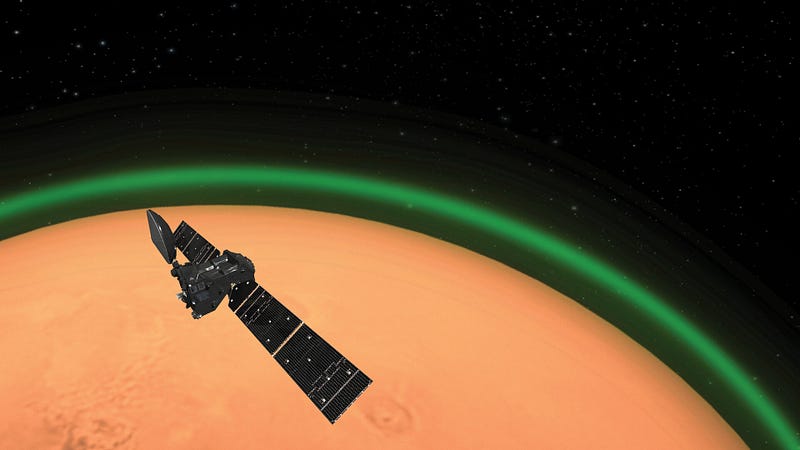The Enigmatic Green Glow of Mars: A New Discovery Unveiled
Written on
Chapter 1: Unveiling the Mystery
What exactly is the green illumination surrounding Mars? Recent findings by the ExoMars Orbiter have revealed the presence of glowing green oxygen in the Martian atmosphere for the very first time. Each advancement in our understanding of the Red Planet brings us closer to answering the question: What lies ahead in our exploration? Just last month, I discussed evidence of an ancient river on Mars, which bolstered the idea that the planet may have once supported life.
On Earth, we are somewhat familiar with the green glows generated by excited oxygen, which occurs when electrons from solar winds collide with our atmosphere. These phenomena, known as auroras—specifically the northern lights (aurora borealis) and southern lights (aurora australis)—exhibit their vibrant green color due to interactions between sunlight and oxygen and nitrogen atoms in our atmosphere.
These stunning displays are most visible near the poles, and since the green nightglow is relatively faint on Earth, the best images are often captured from the vantage point of the International Space Station (ISS). Scientists have long theorized that similar glows could be observed around other celestial bodies, but the bright surfaces of these planets often obscure such colors.

Section 1.1: The Science Behind the Glow
Jean-Claude Gérard, the lead author of the study, explains, “We modeled this emission and discovered that it primarily occurs when carbon dioxide (CO2) breaks down into its fundamental components: carbon monoxide and oxygen. We observed the resulting oxygen atoms emitting light in both visible and ultraviolet spectrums.”

Subsection 1.1.1: Observational Techniques
Most of the green glow captured by the ISS is observed at an angle, focusing on the horizon rather than directly downward. By applying a similar method, astronomers have successfully identified this remarkable phenomenon around Mars.
For nearly four decades, scientists have anticipated the existence of such a glow around the Red Planet, yet a suitable instrument was lacking until now. The European Space Agency's ExoMars Trace Gas Orbiter (TGO), which entered orbit around Mars in 2016, has finally allowed for verification of this hypothesis.
The research team, led by Jean-Claude Gérard from the Université de Liège in Belgium, utilized advanced instruments like NOMAD (Nadir and Occultation for Mars Discovery) and the ultraviolet and visible spectrometer (UVIS) to detect this emission.
The team employed a combination of NOMAD-UVIS to examine various altitudes ranging from 20 to 400 km (12.4 to 248.5 mi) above the Martian surface during each four-day orbit. They found that the green emission, attributed to oxygen, was consistently present, with the strongest signals detected at an altitude of approximately 80 km (49.7 mi).
This groundbreaking discovery is pivotal for enhancing our understanding of the Martian atmosphere, which will be invaluable for future exploratory missions. It also offers insights into how similar phenomena might manifest on other planets.

Chapter 2: Insights from Space Exploration
To delve deeper into this extraordinary discovery, check out the following videos that explore the mysterious green glow observed on Mars.
This video discusses how the green glow on Mars is not an aurora, revealing insights from recent studies.
Discover the reasons behind the mysterious glow of the Martian atmosphere in this informative video.
Stay updated with important developments in space exploration—sign up for my mailing list!